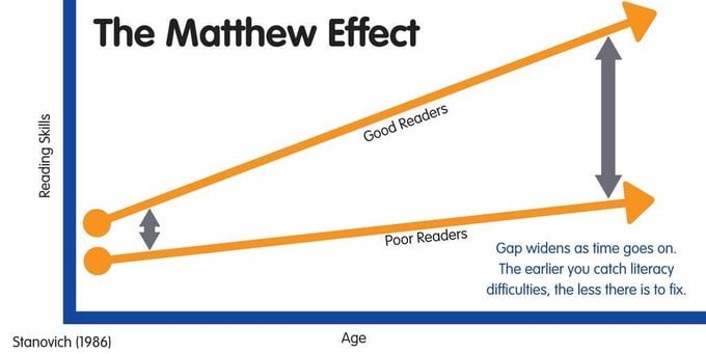Early literacy intervention programs support early elementary school students who lag behind their peers or who are not at the expected reading level. These interventions are designed to help students score on grade level in their reading and writing skills and narrow the gap between the lowest and highest-performing students.
The latest data from the U.S. National Center for Education Statistics shows that more than a third of American fourth graders struggle with reading. As students enter middle and secondary school, reading skills are essential for academic success.
Early literacy intervention programs are one of the most efficient and cost-effective ways to address and prevent later academic problems, such as dropping out of school and failing to graduate.
Where It All Begins – The Impact of Reading Levels in the Third Grade
Because of the link between early literacy levels and long-term outcomes, school districts and education bodies emphasize early literacy intervention programs before the third grade.
This academic year is significant, as students shift from “learning to read” to “reading to learn.” Several studies have found that while gaps between the highest and lowest performing readers in kindergarten to third great are slight, they widen significantly from fourth grade on.
Children who struggle with reading and writing after the fourth grade experience a negative version of the Matthew effect, which explains the cumulative result of reading skills or the lack thereof. It is a phenomenon that describes how early success or failure in acquiring reading skills can lead to later advantages or disadvantages in reading and learning. Good readers read more and improve while poor readers read less and decline.

Strong readers can grasp more information from texts and are able to apply what they’ve learned to other contexts. This strengthens their academic achievement and helps them perform better in school.
On the other hand, children with lower than grade-level literacy cannot access texts in the same way. Since they require support in more basic areas, they may not be able to “catch up” to their peers. Over time, the Matthew Effect widens the divide between strong and struggling readers. As schoolwork becomes more complicated and advanced, students with low literacy skills tend to check out. This can lead to behavioral issues, low self-esteem, and school disengagement.
Studies have shown that children who underperform in regards to literacy in the third grade are four times more likely than their peers to drop out of high school. This results in a higher risk of other negative long-term outcomes, such as lower lifetime earnings, a greater chance of chronic unemployment, and a higher risk of entering the criminal justice system.
Types of Early Literacy Intervention Programs
Early literacy intervention programs target children in kindergarten through third grade and are delivered through schools, libraries, and nonprofit organizations. Children usually enter a program after their teacher or parent notices a lag in literacy development.
There are two primary types of programs that have their own advantages.
Recognizing and sounding out phonemes, or the sounds that make up words is one of the most fundamental reading skills. Eight out of 10 children acquire phonetic knowledge passively from reading aloud, singing, and rhymes. However, around a fifth of children need additional support.
Phonics-based programs increase phonemic awareness, which is the ability to match letter combinations with sounds. A stronger understanding of phonetics helps students sound out unfamiliar words.
Whole language programs do not break down individual syllables. Instead, students are taught to connect the written word to its spoken equivalent. For example, young learners are taught more than 200 sight words, which they should be able to read and comprehend without sounding them out. These words are typically high-frequency words that do not follow standard phonetic conventions.
Benefits of Early Literacy Intervention Programs
Early literacy interventions are designed to boost reading comprehension and writing through an individualized learning plan. Unlike regular classes, participants do not receive grades. Instead, the tutor or reading specialist tracks their progress and supports the development of good reading habits.
Early literacy intervention programs are associated with several positive outcomes. When implemented effectively, these programs can raise on-level reading rates to nearly 100%.
These programs also contribute to improved socio-emotional development and behaviors. When children no longer struggle with literacy, they become more engaged in their classwork. This lowers the frequency of disruptive behaviors.
Children who perform better academically also demonstrate more developed emotional regulation, which contributes to better relationships with their peers, teachers, and caregivers.
Conclusion
While high childhood illiteracy has plagued the US for decades, the COVID pandemic sent rates into free fall. Virtual learning made it difficult for already struggling students to get the individualized attention they needed to improve their reading levels. Reading proficiency rates among the nation’s kindergarteners dropped by 8 percent between 2019 and 2021.
Due to the growing concern over childhood literacy rates, the federal government and many state departments of education have increased funding for early literacy intervention programs.
Funding supports the purchase of supplies, curriculum, and materials, as well as the salaries of qualified reading support specialists. Many states are also increasing grants to train more educators in reading intervention and literacy support.
